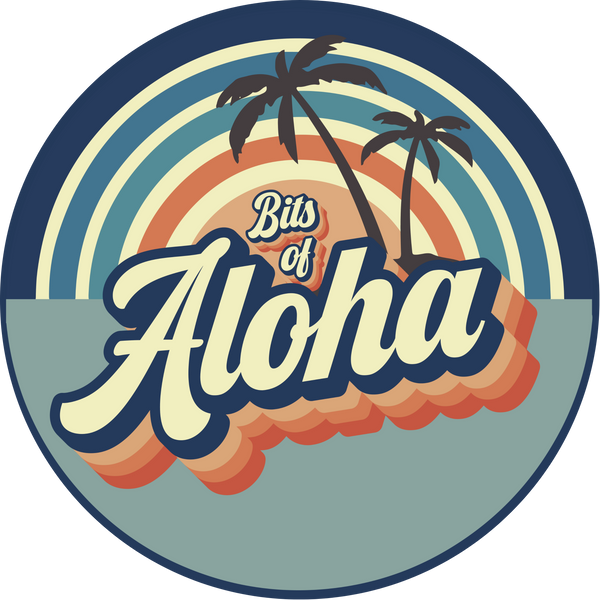
Common Misunderstandings About Hawaii Explained
Share
Hawaii is a place that stirs the imagination. With its turquoise waters, lush green mountains, and deep cultural heritage, the islands are often painted with an idyllic brush by those on the mainland. But for all its beauty, Hawaii is also one of the most misunderstood places in the United States.
From geography to governance, history to fashion, the average mainland American often carries more than a few misconceptions about what Hawaii truly is. These misunderstandings aren't just casual mistakes—they reveal a broader disconnect between perception and lived reality. And in an era where cultural understanding and respect are more important than ever, it’s time to set the record straight.
As we explore the most common myths and misunderstandings about Hawaii, we’ll also spotlight how locals are reshaping the narrative, with style and substance that speaks to true island identity.
Misconception 1: “Is Hawaii Even Part of the U.S.?”
Believe it or not, many mainland Americans still ask this question. While Hawaii became the 50th U.S. state in 1959, there’s a surprisingly persistent belief that Hawaii is somehow not “really” part of the United States—or that it’s a territory like Puerto Rico. Some even think passports are required to travel here.
The truth is: yes, Hawaii is a U.S. state. It has its own governor, sends representatives to Congress, and is subject to U.S. laws. However, this misconception often reflects a deeper issue—Hawaii’s complex and contested history of annexation. Many Native Hawaiians view the U.S. annexation of the Kingdom of Hawaii in 1898 as illegal, and that tension continues to shape cultural and political discourse across the islands today.
Understanding this historical nuance is essential. Hawaii is a U.S. state, but it’s also a sovereign nation at heart—rich with its own traditions, language, and identity that existed long before statehood.
Misconception 2: “Hawaii’s Just Off the Coast of California, Right?”
This one might earn a chuckle from islanders. Contrary to popular belief, Hawaii is not just a short ferry ride from Los Angeles or San Francisco. In fact, Hawaii sits about 2,500 miles from the West Coast, in the middle of the Pacific Ocean. It’s the most remote population center on Earth.
This misunderstanding reveals how disconnected many Americans are from Hawaii’s geography—and from the challenges that remoteness creates. Everything from shipping costs to emergency response times to food sustainability is affected by this vast distance. For locals, living in Hawaii means balancing the joys of isolation with the real-life logistics of being far from the mainland.
Misconception 3: “Everyone in Hawaii Lives on the Beach and Surfs All Day”
Surfing is deeply embedded in Hawaiian culture—after all, Hawaii is the birthplace of modern surfing. But to reduce Hawaii to a postcard image of beach bums and endless waves is to ignore the diverse experiences of people who call the islands home.
Most locals work long hours, often in the service, education, or healthcare sectors. Many juggle multiple jobs to meet Hawaii’s high cost of living. While the surf lifestyle is very much alive, it’s just one facet of a complex, hardworking, and resilient community.
Misconception 4: “Hawaiian Fashion Means Just Loud Shirts”
Let’s talk style. The classic “Hawaiian shirt” seen on tourists is often a far cry from true Hawaiian fashion. What most people associate with a loud, kitschy floral shirt is actually called an Aloha shirt—and when done right, it’s a beautiful reflection of heritage and design.
True island fashion pulls from Native Hawaiian motifs, Japanese aesthetics, surfing culture, and a blend of Asian-Pacific influences. It’s fluid, functional, and deeply expressive. It tells stories—not just of flowers and waves, but of land, lineage, and lifestyle.
Hawaii-based brands like Bits of Aloha are leading a renaissance in local casual fashion, creating collections that marry modern cuts with traditional iconography. Whether it’s bold patterns that reference island flora or casual wear that feels right on both sand and street, this new wave of Hawaiian fashion is all about honoring roots while riding the tide of innovation.
Misconception 5: “Aloha Just Means Hello or Goodbye”
Mainland visitors often toss the word Aloha around like it’s just a polite greeting. But to Hawaiians, Aloha is a way of life—one that embodies love, peace, compassion, and respect.
Living Aloha means more than being friendly. It means caring for the land, honoring your ancestors, treating others with dignity, and acting in harmony with your surroundings. It’s spiritual, relational, and deeply Hawaiian.
Understanding the deeper meaning of Aloha isn’t just cultural etiquette—it’s a doorway into seeing Hawaii with new eyes.
The Bigger Picture: Misconceptions Have Real Consequences
While some misunderstandings about Hawaii may seem harmless, they often lead to the erasure or oversimplification of its rich cultural landscape. When tourists treat the islands as merely a backdrop for selfies, or assume locals live in a permanent vacation mode, it fosters disconnection and even disrespect.
More than ever, there’s a need for cultural literacy and conscious tourism—especially as Hawaii navigates post-pandemic recovery, environmental challenges, and calls for Native Hawaiian justice.
Final Thoughts: Rediscovering Hawaii With Humility and Aloha
Hawaii is not just a vacation spot—it’s a living, breathing culture with a complex history, a strong sense of identity, and a vibrant community. The more we challenge common misconceptions, the more we make room for truth, respect, and authentic connection.
Whether you're booking your first flight to Honolulu or scrolling through island fashion online, remember this: Hawaii is not just a place. It’s a people, a past, a present—and a pulse that beats with Aloha.
Keywords:
Hawaii, Aloha, Hawaiian fashion, surfing, misconceptions, Hawaiian history, geography, culture, tourism, island life, Bits of Aloha, Hawaiian identity
